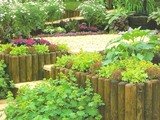|
Perennial Vegetables are Extremely Valuable and Requires Less TimePerennial vegetables are the perfect addition to a quick and easy vegetable garden. Once you set them up right...you won't have to spend a lot of time maintaining them. Now doesn’t this sound great? Of course it does. And here's another benefit... These particular vegetable types are also easy to grow and can last for over 2 years. So think about it. A garden that's...
Perfect isn't it? So... Let's take a look at 4 good examples of perennial vegetables, how to grow them and the benefits available. Let’s start with… Garlic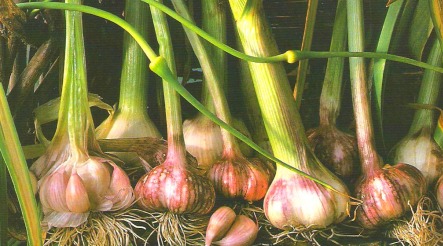 Garlic is a Chef's best friend and I believe that there’s no such thing as too much garlic...don't you? It’s an excellent underground vegetable to have in your garden. And the best time to grow is during the cool weather seasons. This allows for the best results. Try planting garlic in the late August to mid October months. This period is long and most favorable. You can also plant in the spring time. Spring is also a cool season. But... you should wait until the ground is no longer frozen. Choose a site that is exposed fully to the sun to prepare the bed. Fill it up with some soil that has lots of humus and is a bit acidic. One more thing... The soil must not be too clayey. Clay restricts the growth of garlic. A loose, sandy soil is better. This encourages the maturing bulbs to develop faster. Sow each clove directly in the garden with their ends projected upward. Plant them about 3 inches deep (don't go deeper than this) and 3 inches apart in all directions. Water them well until the garlic leaves are 1ft tall and keep them free of any weeds. Mulches assists a lot in keeping the garlic beds weed free. Additionally you don't have to worry about insects and pest. As a matter of fact... garlic is a natural pest repellent. Harvesting Garlic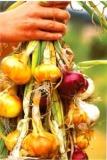 Garlic form bulbs during the last 45 days of the growing season. But if this is too long a wait you can speed up the process. Here's how... Knock the top ground shoots over at about 90 to 110 days after you plant them. Then when the foliage turns yellow, loosen the dirt and pull up the entire plant. If you plan on braiding garlic for storage use, you wouldn’t need to cut the leaves. Braiding garlic is a really creative and neat storage method to try out. Brush off any excess soil on the bulb. Then leave braid the leaves just as if you were braiding human hair. However, the braids must be tight. Then hang them to dry in a warm place. Sweet PotatoThis is one of my favorite perennial vegetables as they taste so good and there are many meals you can make with them. Sweet potatoes like hot weather and long growing periods. 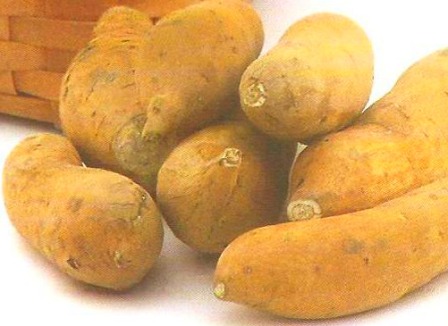 The ideal temperature for growing is 80 degrees F. Thus they're usually planted during the warmer months of July to August. This period provide the best conditions for growing sweet potatoes. As strange as this may sound... These perennial vegetables prefer soil that’s not too rich. You see... soil that's rich in nitrogen encourages the growth of the vine instead of the roots. And it's the roots that we're after. You can grow sweet potatoes in rows placing them 2 ½ feet apart. And don’t worry if you lack space. You can always run the 4ft to 16 ft vines up onto a garden fence. Or… You can grow them in a deep window box with the vines trailing down. Take care of the secondary roots of the sweet potato. These roots are very important for the growing process. Once they are thoroughly established, they can handle a drought period without any hassle. And I guess that's what we're looking for in perennial vegetables. No hassle even in dry and drought periods. You can even simplify the entire process by purchasing sweet potato starts at your local garden store. All you do next is simply plant them at 1 to 3ft intervals in the garden. But be careful that you don't sneak in any unwanted weeds and/or pests. Harvesting the sweet potatoesTiming is everything for a favorable yield. Planting too late or harvesting too early can result in a small, low starch roots that will be unsuitable for storage. Don’t harvest them when the soil is wet. Choose a very sunny, dry day because that’s the best condition for harvesting. You see...after harvesting the sweet potato has to be dried. If not they begin to rot and spoil. Thus after harvesting... Spread out the roots on the ground in the sun for 2 to 3 hours to dry. Also...Be careful not to damage the crop when digging them up. Bunching OnionsThese onions are unique. That's because they never develop bulbs like 'normal' onions. In fact... Instead of bulbs these onions have long, thin, white bottoms. And also their top resembles the green foliage of chives. But what's so great about them is that a patch of bunching onions can produce for at least 10 to 20 years. Now that's long lasting. So you can begin sowing these onions during spring. You can also use the block method of cultivating to get thick patches of these perennial vegetables. And last but not least... The best location for them is where they will not be exposed to any disturbance. Seeing as these onions last for such long periods of time...It would be best to give them their space. Harvesting the OnionsHarvest a little in the first year and let the remaining plants self – sow. This permits the patch to strengthen. You'll then notice that in the following spring you'll have a greater abundance of the vegetable. And as a result... You may need to harvest as required even though these onions are usually at their best quality earlier in the year. Chives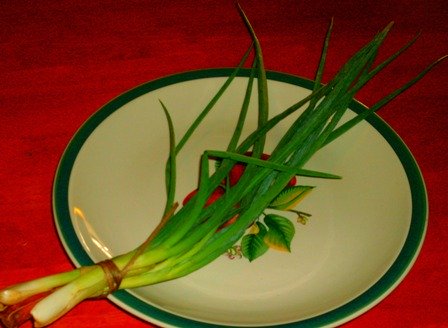 Chives are some hardy perennials with some hollow rich green leaves. They grow in clumps that are about 8 to 12 inches tall. They also develop some really beautiful circular shaped flowers that are strong in flavor. These flowers are excellent ingredient in salads and can also be used for garnishing meals. When planting chives... Sow their seeds about ¼ inch deep in fertile soil that are fully exposed to sunlight. You can also space them apart at 12 inches so that there's enough room when they begin to spread. Once they do begin spreading...it's best to separate these clumps of chive every 2 to 3 years and reset into the garden. Chives look exceptionally gorgeous as a decorative border in herb gardens, so you can experiment with them in that manner. Harvesting ChivesYou can get the best chives during spring. So that's our ideal harvest time. Instead of digging them out by their roots... Pinch off only the thin grass-like tops. The stem and root will eventually regrow again. And this saving you the time and effort to re-cultivate. The Benefits of Growing Perennial Vegetables in Your GardenPerennial vegetables protects the soil especially against erosion. Because they're long-lasting they provide great cover against wind and rain. Their growing process and decay also help to maintain soil nutrients. These perennial are also good for us. They mainly contain...
I must also repeat how beautiful they are in the garden. And also how they create a good habitual ground for beneficial insects like the lady bug. They're also effective in defending the other vegetables in the garden due to the fact that they’re pest resistant.
Perennial vegetables don't require much tilling when they're fully mulched. Doesn't this make them more attractive? That’s right. They make the whole growing process easier. You won't have to spend a lot of time to tend to them. You can grow these perennial vegetables and they'll produce for years. They basically take care of themselves.
Move from Perennial Vegetables to Vegetable List
|









